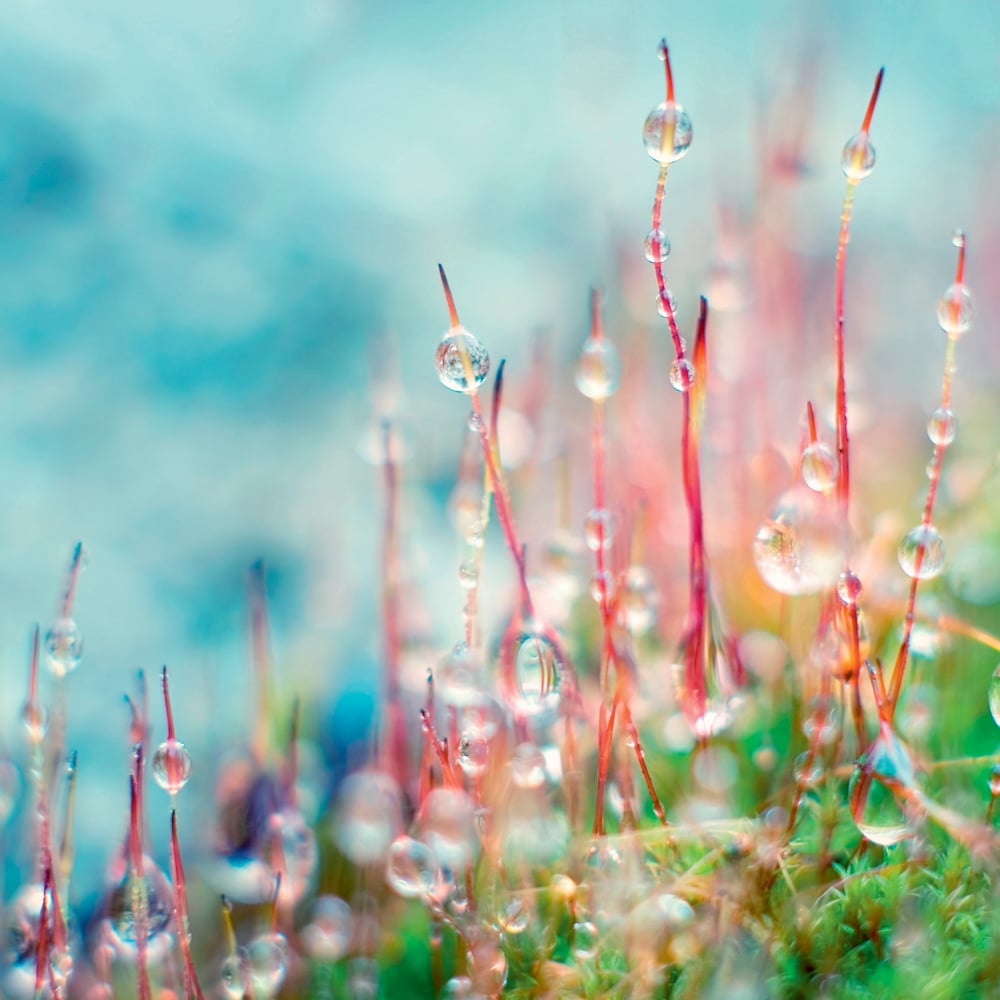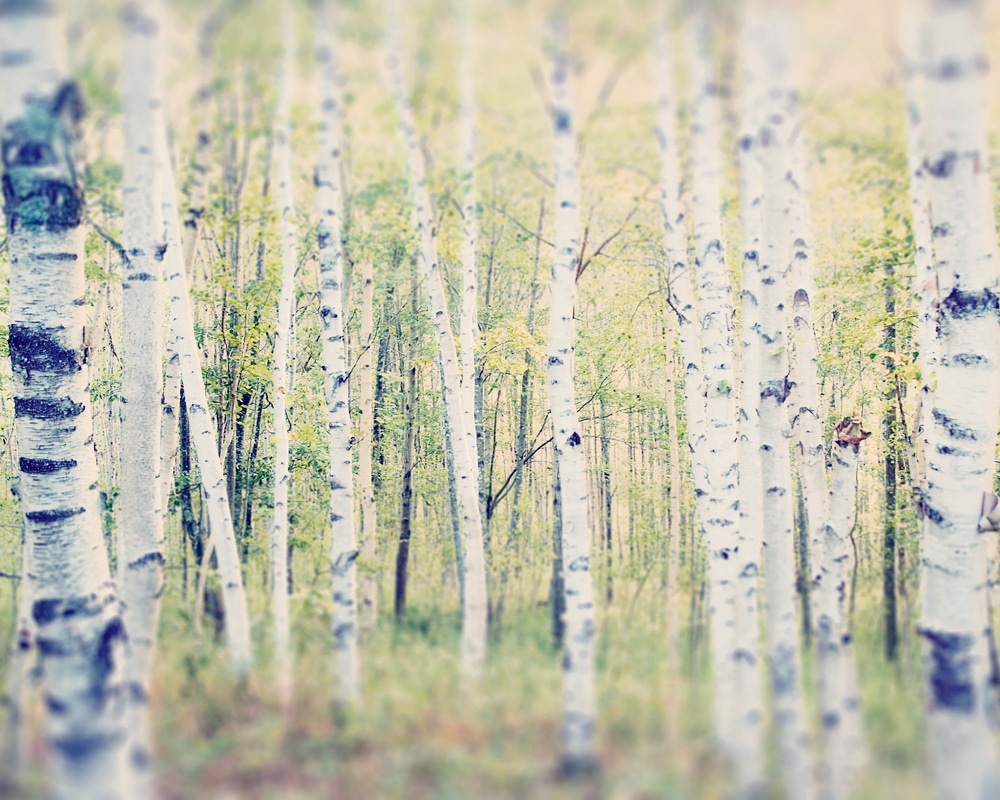The Ephemerals
In these wild woods, the springtime things that pass most quickly are the greatest teachers about time.

Coffee By Design | Portland, Maine
Photo Credit : Katherine KeenanTonight is the night. After months of thin winter air, a warm breath has blown in from somewhere south, thick with moisture, and the land starts to unfold. The maples flush the faintest scarlet, and in the woods behind our farmhouse the spring ephemeral wildflowers are up: trout lily, trillium, bloodroot, spring beauty, Dutchman’s breeches.

Photo Credit : Allison Trentelman
At dusk, it begins. From the fen, a single, short eep, like a creaky old door. Then another, a few seconds later. It sounds both enthusiastic and unoptimistic, like the SETI folks beaming their message to extraterrestrials. Is there anybody out there? The peeper continues for half an hour as the sky darkens and a fine mist falls, and then, miracle of miracles, somebody answers. There’s another peep, and another, and soon the night is filled with them, a squeaky jam session.
Spring peepers! We pad across the backyard, no lights, and follow the trail to the fen. We’ve been waiting for this, toeing the party line about how wonderful winter is, keeping a stiff upper lip through the March mud, when really all we wanted was stuff happening. And now it is.
We keep quiet and still, but the closest frogs sense our presence and clam up. Farther out in the fen, though, from every reed and willow, they are peeping like mad. The sound rattles around your brain until you think you might go mad yourself, but it’s a happy spring madness, a bacchanal of mud and sex and blissed-out organisms. It sings to all who will listen that right now, this is the place to be.
That’s how we felt when we moved into the old farmhouse 18 falls ago. We arrived just in time to watch the hillsides oxidize bronze and gold, then hung on tight through the dark and cold until spring came. Suddenly there were peeps in the fen and mysterious flowers in the woods. We felt like newbies at an old New England summer colony. The Maples and the Robins and the Birches had been here for generations. This is how we do it, they seemed to be saying. The house itself had seen 175 summers. We just tried to fit in.
The peeps pipe down at dawn. We follow the trail past the fen, listening to the churr of red-winged blackbirds—always one of the first arrivals—camped out on last year’s cattails. In the woods, we search for spring ephemerals, the tiny ground-huggers that make the briefest of appearances. With no leaves in the canopy, the mossy ground glistens with light. We stoop to examine trout lilies, their leaves speckled like brookies. Here’s a patch of pink-veined spring beauties, intensely perfumed if you get your nose right down next to them. We even spot some Dutchman’s breeches, whose puffy white petals everyone compares to pants hanging on a clothesline, but remind us of pantalooned acrobats in mid-split.
Let’s face it: A month from now, when lilacs and crab-apples are drenching the landscape in scent and color, these pipsqueaks wouldn’t merit a second glance. But right now they are the only game in town—which, of course, is their whole plan. These little forest flowers live their entire life cycle—sprout, flower, get pollinated, go to seed, disappear—before the trees have even leafed out. The sun is all theirs, as are the few bugs. In a few weeks, we’ll never know they were here.
The ephemerals have always seemed like the weirdest residents of the summer colony: Arrive when it’s still nasty out, and then vanish just as things are getting nice. Why not stay all summer like the Robins and the Roses? But the more springs I get to know them, the more I learn the lesson they have to teach.
As we climb the muddy trail through the woods, signs of time are everywhere. Old cellar holes. Centurion apple trees. Slate-lined springs dug by some determined soul. From the top of the hill, we look down on our house and fields. Anywhere I dig in those fields, I come up with cans, wires, and old tools. We live atop the ruins of an earlier culture.

Photo Credit : Allison Trentelman
Heck, when we bought the place, the flagstone basement was filled with the knickknacks of that earlier culture. For decades the house was occupied by a couple who ran the local hardware store, and they were serious pack rats. They hoarded the tools and trinkets that flowed through their store, and they also bought up the houses and land around them. Quirky and colorful, they were a local institution, the character of the place … and then they were gone and forgotten, a mossy headstone in the country cemetery, their reign as evanescent as this year’s spring beauties.
Beneath a stand of ash we discover a carpet of white bloodroot blossoms, their leaves wrapped around their stems like capes. When I see these pioneer plants pushing their noses up through the last bits of frost, I picture the New England of 12,000 years ago, when a warming world thawed the glaciers and released the land. For 90,000 years before that, there wasn’t much going on around here. This place was dead.
When the first humans arrived, chasing the caribou that were chasing the tundra, there were still no trees, just rocks and sedge. We predate the forest. Hike the White Mountains above treeline and you’ll get a sense of that landscape. The first trees—cold-loving spruces and firs—didn’t arrive for millennia. Hike the White Mountains a thousand feet lower and you’ll get a sense of that landscape. Keep dropping toward the valley floor and you’ll be fast-forwarding history as the birches and aspens arrive, then beech and maple, and finally oaks.
Sometimes I play that history in my mind, the mile-high rivers of ice bulldozing the earth, then retreating in a gush of silty meltwater, the first shrubs popping up and the caribou herds flowing across the land, human hunters behind them. Then, as the sun and moon whir overhead and the snows come and go, but mostly go, the first trees pioneer the tundra, and soon the new forests march up the river valleys and over the hills, all the species of the mixed woods swirling together and jockeying for territory, water welling up through bedrock to form the fens, frogs flickering in and out of existence like specks on an old movie reel, and then, late in the film, the settlements come up the same river valleys, men with axes clacking like windup toys, grasses and sheep chasing the forests back to the most inaccessible slopes, towns edging out from the rivers, until, in the last few seconds of the film, the men with axes disappear, the sheep disappear, the old houses melt into the earth, and the forests come flowing back down the hillsides and over the cellar holes.
And here we are, the latest arrivals to this wild interglacial happening. Like all recent arrivals, we assume that everyone else has been here forever. But we’re all newbies. Us, the old hardware couple, and the honeybees and dandelions before them. Even the birches. These forests are still jockeying for the best plots, and they will continue scrapping as the climate warms. They’re still making up the rules as they go. The methuselah maple near the farmhouse died last year; the oak tree had its first acorns. With its craggy granite peaks and weathered farmhouses, New England can feel ancient, but it is eternally new. We are less an old summer colony than a sudden summer party.
The next night is even warmer—strangely warm, in fact—and the chorus intensifies. The peepers start raging at twilight, joined by clucking wood frogs and a piping thrush. We hover on the muddy edge of it all, wishing we had a tent. It feels like the beginning of something important, but it might just as easily be the end of something sweet and brief, the kind of thing I’ll report to my perplexed grandkids years from now. “Hey, man,” I’ll say, “I heard the blackbirds and the peepers. I was there.” The point, as the spring ephemerals teach, is to keep your perspective. We may be stardust, but we aren’t frozen right now.
In weeks, the peepers will have gone silent and the spring beauties will again retreat into the earth. Not so long after that, we’ll follow. Things will keep changing, and the next generation to arrive will look around the place and assume what is, is. And they’ll be wrong. It’s never been like this, and it never will be again.








The Ephemerals is quite simply exquisitely written. What’s captured for anyone wishing to grasp it is a poetic explanation for why we so need to live life fully as, like the trillium and the peepers, we are only here for a little while. You’d think you’d read this piece and be all melancholy. But for me it’s been an affirmation of the roundness of life: we’re here, then we’re not, and we will be again.
What a beautifully written perspective on life and the importance of our being a part of the natural world. Earth is constantly changing and nature adapts to the changes. Thank you for your lovely and thought provoking article.